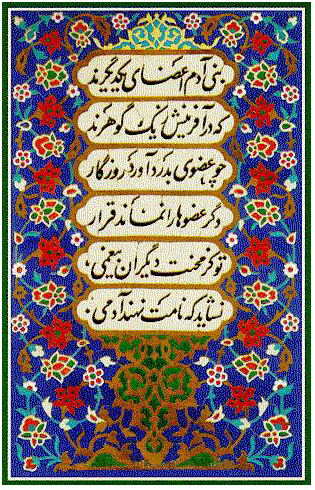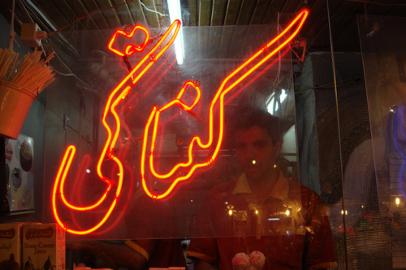Calligraphy in the Middle East has always had architectural applications; as a sacred art to write holy words of Koran and other religious quotes and as a decoration to make architectural monuments such as mosques and shrines look more and more beautiful. There is at least one calligraphy piece like a headline at the entrance of each and every mosque or holy shrine. In Iran also, calligraphy has been used for the purpose of religious scripts. However, major Persian Calligraphy styles i.e. Nas’taliq and Cursive Nas’taliq have more often been applied as a divine art to provide a memorable visual impression of deep meanings behind Persian poetry.

Poem by Sa'adi, Great Persian Poet:
بنی آدم اعضای یک پیکرند
که در آفرينش ز یک گوهرند
چو عضوى به درد آورد روزگار
دگر عضو ها را نماند قرار
تو کز محنت دیگران بی غمی
نشاید که نامت نهند آدمی
Translation of the Poem:
Human beings are members of a whole,
In creation of one essence and soul.
If one member is afflicted with pain,
Other members uneasy will remain.
If you have no sympathy for human pain,
The name of human you cannot retain.
Modern Persian Calligraphy:
Modern Persian Calligraphy is not only more often used for poetic purposes, but also it has become so popular in 20th and 21st centuries that people even apply it into their day to day life, in the formal letter-heads, banner ads, on cover of their books, press, and even as a business sign or logo on business cards or store signs. Even in the last decade a few software packages have been developed in Iran that create Nas’taliq calligraphy and makes contemporary artistic computer design more convenient, though less artistic.

A Persian Calligraphy Store Sign in Tehran (a Restaurant similar to KFC); the sign says " Kentucky"